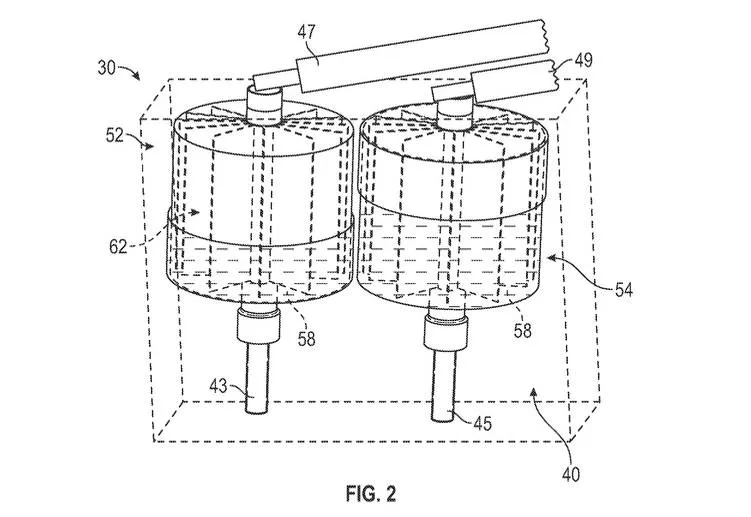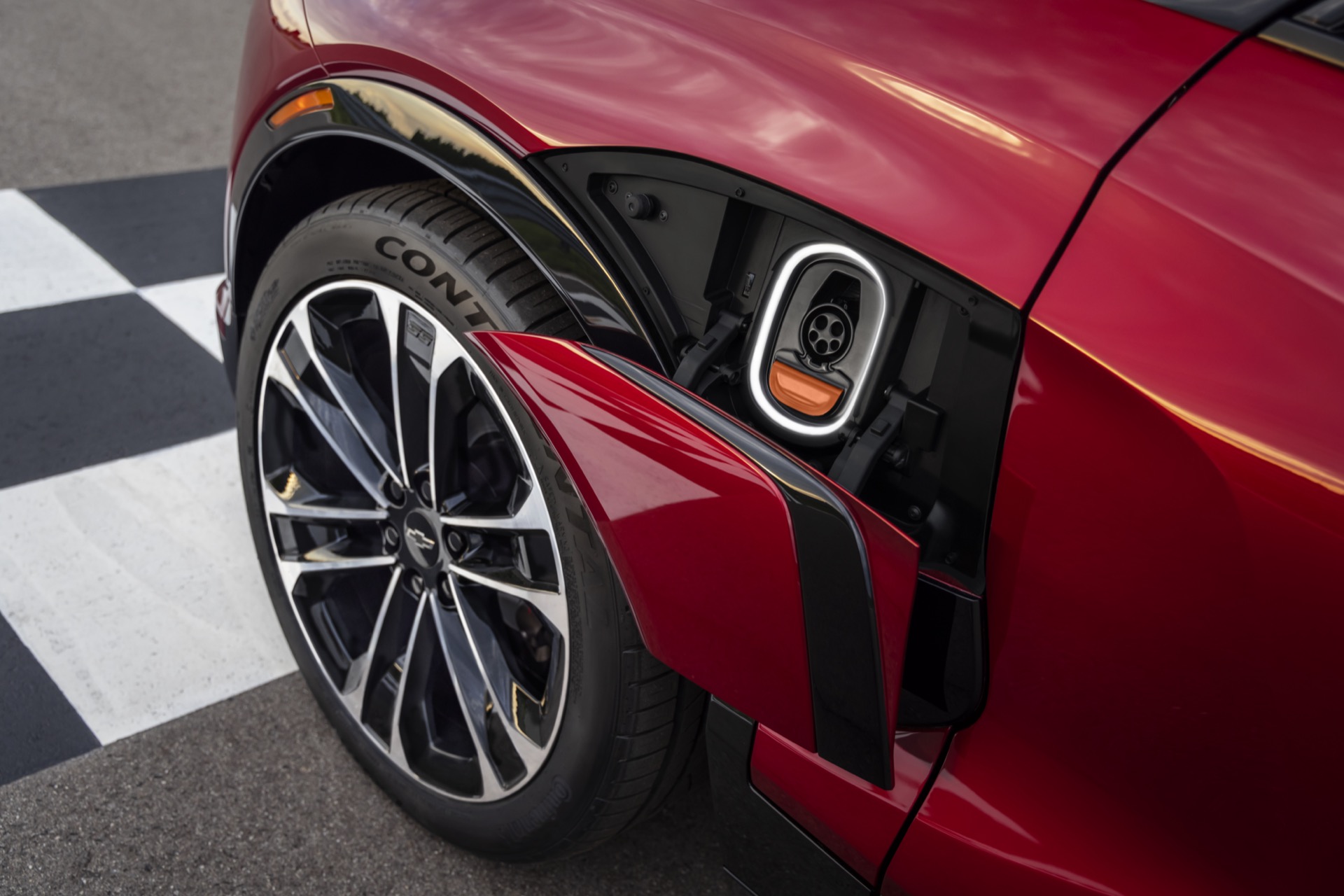Faster DC charging has required a new generation of cable cooling, but General Motors is also looking at cooling of the charge port, a patent filing indicates.
Published by the United States Patent and Trademark Office (USPTO) April 25, 2024, and originally filed by GM October 18, 2022, the patent application in question deals with cooling of EV charge ports with phase change material (PCM).
A PCM is one that absorbs and releases heat when it goes through a phase change—hence the name. PCM cooling has been used in heat sinks in the computing world for years, and has becoming increasingly common in outdoor gear.
General Motors PCM charge port cooling patent image
In this charging application, PCM would be placed around the charge port and would shift from a solid to a liquid state as it absorbs heat caused by the flow of electricity through the port, thus providing a cooling effect, GM states in the application. If temperatures still rise above a predetermined threshold, an onboard controller would automatically derate charging, the automaker adds.
One approach discussed in the application mentions a heat spreader and metallic foam as a possible configuration, but regardless it’s unlikely that PCM charge port cooling would require moving parts. It’s also likely much less complex than liquid cooling.

General Motors PCM charge port cooling patent image
So far, efforts to cool off hardware in order to boost charging speeds have focused on other areas. In 2021, researchers at Ford and Purdue University showed off a phase-change method for helping cool EVs for faster charging. But this involved a phase change of coolant (from liquid to vapor) in a cable, not a charge port. In some EVs, the cabin cooling system also helps the battery stay cool during charging, but that also hasn’t been applied to the charge port itself.
Heat buildup is one of the main reasons EV makers are shifting to higher voltages as well. This is why Porsche pushed for 800-volt charging instead of 400-volt for the Taycan.



